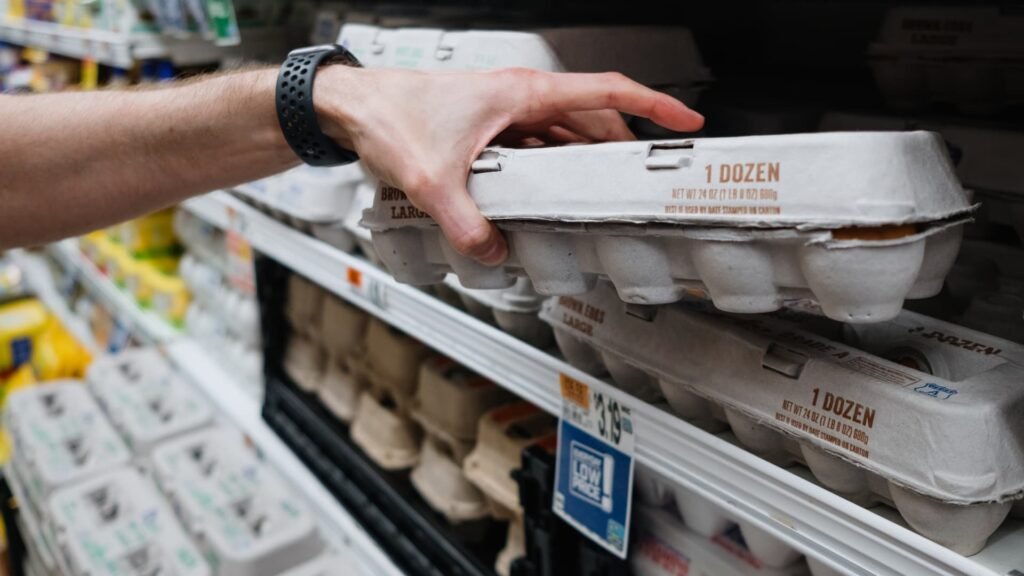Grace Carey | Moment | Getty Images
Inflation remained subdued in August, suggesting that the rapid price increases that have plagued the U.S. economy for the better part of three pandemic-era years are gradually becoming a thing of the past.
Sarah House, senior economist at Wells Fargo Economics, said overall inflationary pressures are “dissipating.”
The Labor Department said Wednesday that the Consumer Price Index, a measure of how quickly prices are changing across the U.S. economy, rose 2.5% in August from a year earlier.
The figure was down from 2.9% in July and the lowest since February 2021.
But there are still some areas of concern, economists say, with housing perhaps the most worrisome, though they also note that prices for basic goods like food and gasoline have normalized and inflation appears to be trending steadily downward.
House said that while there will be “some ups and downs” in the monthly data, “we expect inflation to continue to decline.”
“Tamed” does not mean “conquered”
The August inflation rate was down sharply from a pandemic-era peak of 9.1% in mid-2022, the highest since 1981.
It’s also approaching policymakers’ long-term goal of about 2 percent.
“While inflation overall appears to be well contained, home price inflation has not subsided as quickly as expected and has not yet fully resolved,” Paul Ashworth, chief North American economist at Capital Economics, wrote in a note Wednesday morning.
With that in mind, the Federal Reserve is expected to start cutting interest rates this month as it shifts its focus from fighting inflation to avoiding a recession as the job market cools.
Central banks have raised interest rates during the pandemic to their highest levels in 23 years, raising borrowing costs for consumers and businesses in an effort to tame inflation.
Both House and Ashworth expect the Fed to cut interest rates by 0.25 percentage point at its policy meeting next week.
Housing inflation is declining but remains high
As the U.S. economy reopened in 2021, physical goods inflation soared.
The supply shortages have coincided with rising consumer demand as the coronavirus pandemic has disrupted supply chains, causing Americans to spend more on housing and less on services like dining out and entertainment.
Services inflation, which is generally sensitive to labor costs, also jumped, economists said, partly due to a historically strong labor market as employers rushed to find workers as the economy reopened.
More information on personal finance:
The US economy is on a soft landing and the ‘Vibession’ is coming to an end
U.S. jobs market slowing, but not yet at ‘triple alarm’ levels
Retirees who relocate want lower living costs and a better lifestyle
Economists said housing, which is part of the “services” category, was a major obstacle to overall inflation falling to the Fed’s target.
Housing is the largest component of the CPI and therefore has a large impact on the inflation measure.
The housing index has risen 5.2% since August 2023, accounting for more than 70% of the annual increase in the “core” CPI, the BLS said Wednesday. (Core CPI is economists’ preferred measure of inflation trends, which excludes volatile food and energy costs.)
Economists point out that home prices rise and fall very slowly because of the way the government measures it.
Economists say these data anomalies mask positive news in the real-time rental market, which has seen minimal inflation for nearly two years. Average rents in the second quarter of 2024 fell 1% year-over-year (meaning prices actually fell), according to the BLS New Tenant Rent Index.
However, housing CPI inflation appears to have defy gravity recently, rising on a monthly basis for two consecutive months, from 0.2% in June to 0.4% in July and 0.5% in August.
“It’s baffling, to be honest,” House said.[But] Given the overall trends in the rental market, my view is that demand for housing will continue to slow.
Other “Noteworthy” Categories
More broadly, other areas that saw “notable increases” over the past year include auto insurance (prices are up 16.5% from August 2023), health care (up 3%), recreation (up 1.6%) and education (up 3.1%), the BLS said.
Economists say high new and used car prices a few years ago are likely contributing to higher auto insurance and repair costs today, because more expensive cars generally cost more to insure and repair.


Insurance inflation should eventually subside as auto prices fall, they say: New-car prices have fallen about 1% over the past year, while prices for used cars and trucks have fallen more than 10%.
Egg prices, which skyrocketed in 2022 due to a historic outbreak of bird flu, are on the rise again following a resurgence of the deadly disease, with prices up 28% year-on-year.
Annual inflation for all food items was less than 1% in August, down from an average of 11.4% for 2022, the highest since 1979.
Gasoline prices have also fallen by about 10% over the past year.



